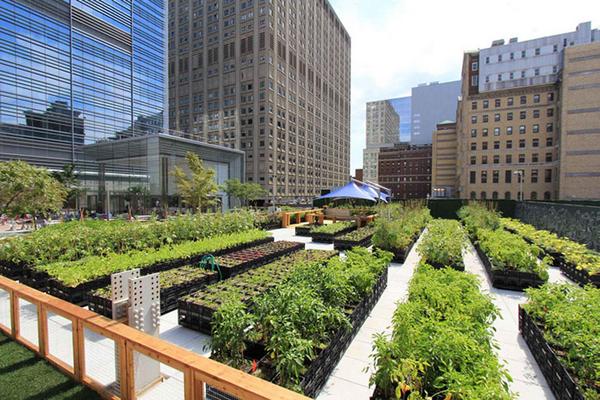All About City Blooming
All About City Blooming
Blog Article
Facts About City Blooming Uncovered
Table of ContentsNot known Details About City Blooming An Unbiased View of City BloomingMore About City Blooming5 Simple Techniques For City BloomingThe smart Trick of City Blooming That Nobody is Talking About
Fascinated in growing food for sale in the City of Chicago? Below is a listing of often asked concerns pertaining to the rules and laws that cultivators must consider when planning a city agriculture project.
The zoning amendment does not modify any type of various other codes managing composting, structure permits, acquiring or renting City possessed home, business licenses or environmental contamination. There are existing codes that regulate these concerns and they stay in complete result and may apply to your job. Community gardens are generally had or taken care of by public entities, civic organizations or community-based companies and maintained by volunteers.
Urban farms expand food that is intended to be offered, either on a nonprofit or for-profit basis. As a result of their commercial purpose, city ranches require an organization certificate. Yes. A community garden is permitted to offer surplus produce that was expanded on website if the sales are accessory or secondary to the garden's main purpose defined over.
Little Known Questions About City Blooming.
Composting is allowed yet just for plant material that is produced and utilized on website. The quantity of compost material can not surpass 25 cubic backyards at any type of given time according to the requirements in 7-28-715 of the City's Municipal Code. Yes. Since the dirt at many brand-new yard websites requires amending, compost, soil, timber chips, or other materials can be obtained to create or improve the growing area - home and garden.

If a building authorization is required after that the hoophouse will be thought about an accessory building. You can figure out even more about the structure license requirements by contacting the Division of Structures. The 25,000-square-foot size limitation is meant to stop a solitary neighborhood garden from dominating an offered block or interfering with the block's existing household or commercial personality.
The limitation does not relate to yards located in Public Open Area (POS) areas. Can there be more than one community garden that is 25,000 square feet on a single block? Yes. The dimension limit uses to specific yards, not to individual blocks. No. Secure fencing is not required, nevertheless, yards that have huge car parking areas may be called for to mount secure fencing or other landscape design features.
4 Easy Facts About City Blooming Shown
B1 & B2 areas call for that all business use activities be performed inside. Is fencing needed for metropolitan farms? Fencings might be needed, along with landscape design and testing, for certain car park locations and outdoor job or storage areas depending on location and the specific activity taking location.
Urban ranches require structure licenses and zoning approvals prior to building (indoor plants). Other forms of city testimonial might be required depending on specific structures, tasks, size, landscaping, licensing, public health and stormwater management problems.
Yes. The sort of permit is determined by what is taking place at the site. The Department of Business Matters and Consumer Defense can aid determine the particular kind of company certificate that's called for. Yes. Off street vehicle parking is needed for most business projects in Chicago. The called for variety of vehicle parking rooms is based upon the variety of workers working with website and not the square video of the growing space.
Get This Report on City Blooming

A city ranch can sell garden compost product produced on site, nonetheless, the procedure has to abide with the laws in 7-28-715 of the Chicago Municipal Code. Aquaponic about his systems are enabled inside on urban ranches in lots of zoning areas.
Up to 5 hives or nests of honey bees may be maintained as an accessory usage. Nonetheless, beekeepers have to sign up with the Illinois Division of Farming. For additional information about the recommended zoning modification you might speak to the Division of Real Estate and Economic Development, Bureau of Preparation and Zoning at 312.744.8563.
Farming in cities and urban areas A city farm in Chicago. Urban agriculture describes various practices of growing. https://canvas.instructure.com/eportfolios/2986028/Home/City_Gardening_A_Green_Oasis_in_the_Concrete_Jungle, handling, and distributing food in metropolitan areas. The term likewise applies to the area activities of animal husbandry, aquaculture, beekeeping, and horticulture in an urban context. Urban farming is identified from peri-urban farming, which takes area in rural areas at the edge of suburban areas.
Indicators on City Blooming You Need To Know
It can entail an activity of organic growers, "foodies" and "locavores", that seek to form social networks started on a common principles of nature and community holism. These networks can develop using formal institutional support, coming to be incorporated into regional town planning as a "transition community" movement for lasting urban advancement.
The extra direct access to fresh vegetable, fruit, and meat products that may be know via urban agriculture can enhance food protection and food safety while lowering food miles, causing reduced greenhouse gas emissions, consequently adding to environment adjustment reduction. Several of the first evidence of urban agriculture comes from Mesopotamia.
Report this page